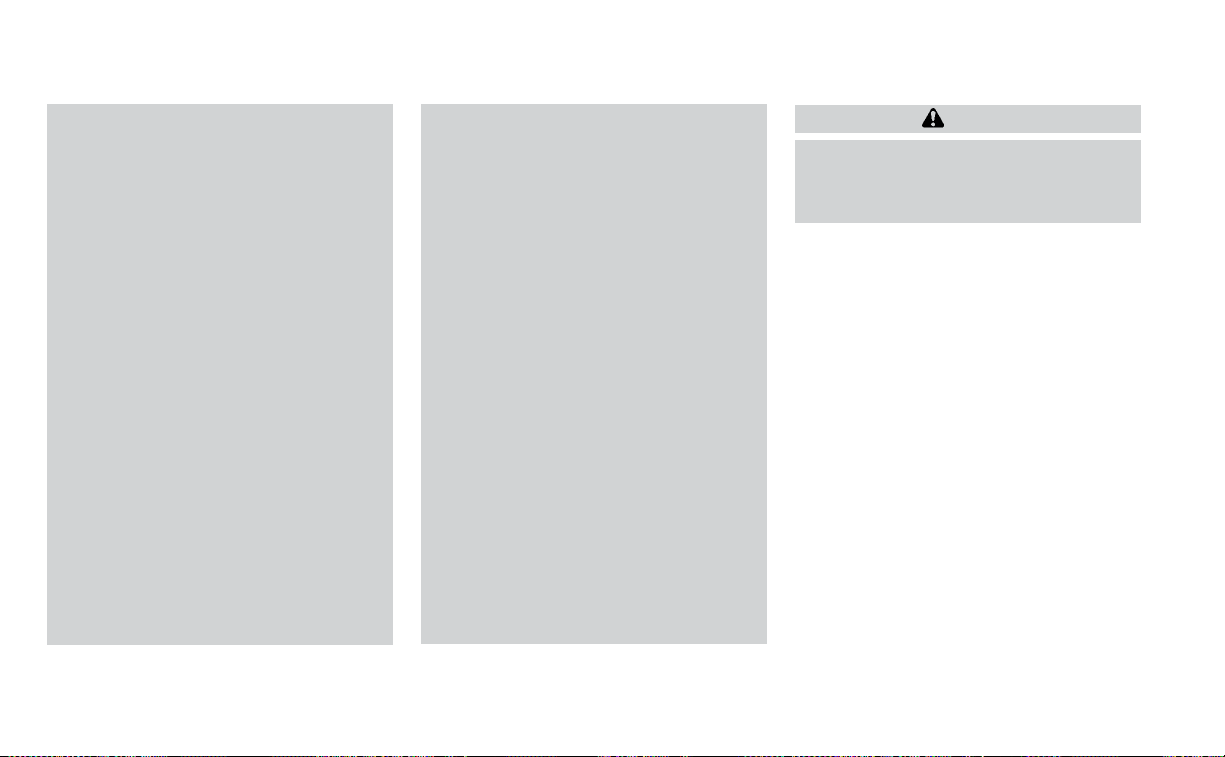Loading ...
Loading ...
Loading ...

• Infants and children should never be
held on anyone’s lap. Even the stron-
gest adult cannot resist the forces of
a collision.
• Do not put a seat belt around both a
child and another passenger.
• NISSAN recommends that all child re-
straints be installed in the rear seat.
Studies show that children are safer
when properly restrained in the rear
seat than in the front seat. If you
must install a forward-facing child
restraint in the front seat, see
“Forward-facing child restraint in-
stallation using the seat belts”
(P. 1-36).
• Even with the NISSAN Advanced Air
Bag System, never install a rear-
facing child restraint in the front seat.
An inflating air bag could seriously
injure or kill a child. A rear-facing
child restraint must only be used in
the rear seat.
• Be sure to purchase a child restraint
that will fit the child and vehicle.
Some child restraints may not fit
properly in your vehicle.
• Child restraint anchorages are de-
signed to withstand only those loads
imposed by correctly fitted child re-
straints. Under no circumstances are
they to be used to attach adult seat
belts, or other items or equipment to
the vehicle. Doing so could damage
the child restraint anchorages. The
child restraint will not be properly in-
stalled using the damaged anchor-
age, and a child could be seriously
injured or killed in a collision.
• Never use the anchor points for adult
seat belts or other items.
• A child restraint with a top tether
strap should not be used in the front
passenger seat.
• Keep seatbacks as upright as pos-
sible after fitting the child restraint.
• Infants and children should always
be placed in an appropriate child re-
straint while in the vehicle.
• When the child restraint is not in use,
keep it secured with the LATCH sys-
tem or a seat belt. In a sudden stop or
collision, loose objects can injure oc-
cupants or damage the vehicle.
CAUTION
A child restraint in a closed vehicle can
become very hot. Check the seating
sur face and buckles before placing a
child in the child restraint.
This vehicle is equipped with a universal
child restraint anchor system, referred to
as the LATCH (Lower Anchors and Tethers
for CHildren) system. Some child restraints
include rigid or webbing-mounted attach-
ments that can be connected to these
anchors.
For additional information, see “LATCH
(Lower Anchors and Tethers for CHildren)
system” (P. 1-24).
If you do not have a LATCH compatible
child restraint, the vehicle seat belts can be
used.
Several manufacturers offer child re-
straints for infants and small children of
various sizes. When selecting any child re-
straint, keep the following points in mind:
• Choose only a restraint with a label certi-
fying that it complies with Federal Motor
Vehicle Safety Standard 213 or Canadian
Motor Vehicle Safety Standard 213.
Safety–Seats, seat belts and supplemental restraint system 1-23
Loading ...
Loading ...
Loading ...